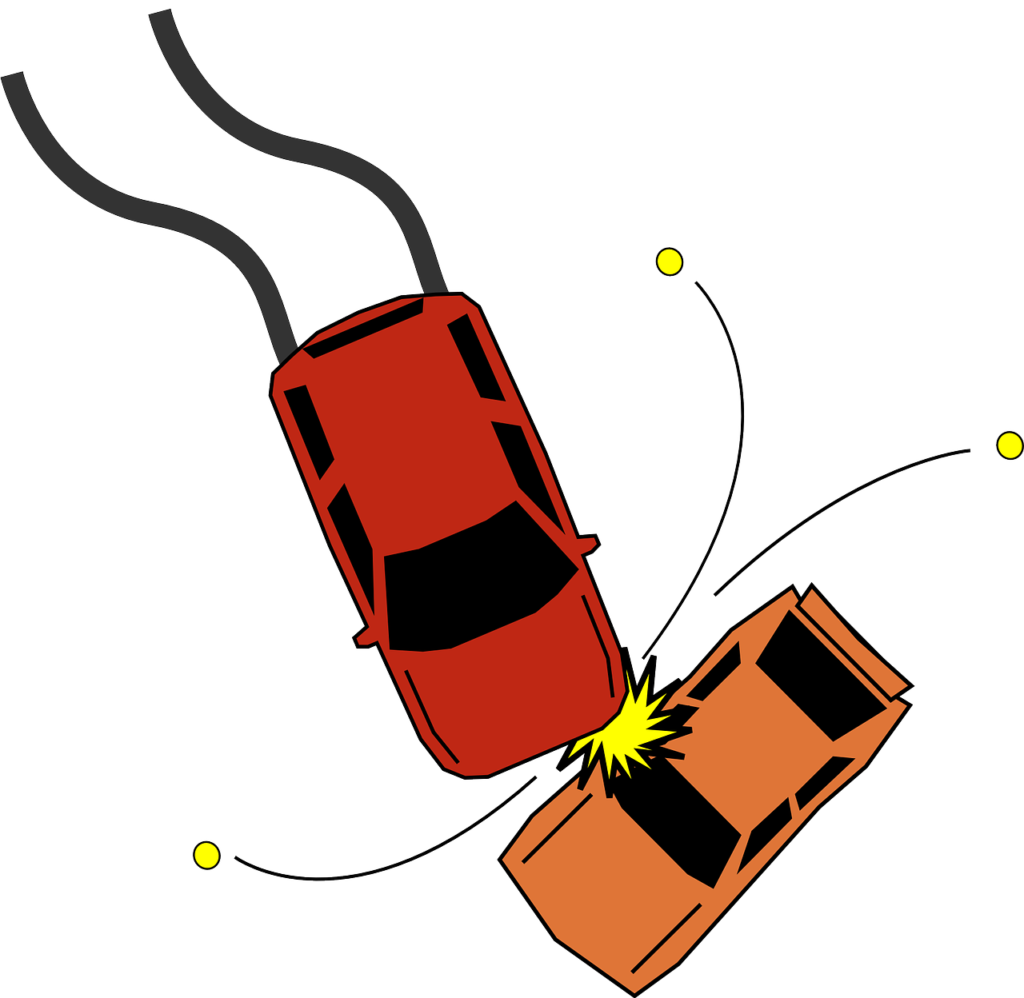
Introduction
Every time you get behind the wheel, you hold the responsibility of ensuring not just your safety but also that of others on the road. Yet, many drivers continue to risk this safety by texting while driving. It’s an activity that significantly increases the potential for accidents and injuries on our roads. Using a cell phone while driving creates enormous potential for deaths and injuries on U.S. roads.
It’s time we address this critical issue, especially in Ohio, where the problem persists despite existing laws. By spreading awareness and supporting initiatives like the Don’t Text and Drive Scholarship, we can make our roads safer for everyone. The scholarship program not only raises awareness about the dangers of texting and driving but also encourages young people to commit to safe driving practices by offering financial incentives.
Every single time I drive, I see at least half the cars around me with drivers on their cell phones. This is not just a minor inconvenience; it’s a significant threat to public safety that needs immediate attention. We need to shift our collective mindset and recognize that no text is worth risking a life.
Our lawmakers also have a role to play. By advocating for stricter laws and better enforcement, we can create a safer environment for all drivers. We need our local politicians to step up, increase penalties, and support public awareness campaigns aimed at curbing this dangerous behavior. Together, we can make a difference and create safer roads for everyone.
Point 1: Slower Reaction Times
When you’re texting, your reaction times slow down to a level comparable to driving under the influence. Texting is the most alarming distraction because sending or reading a text takes your eyes off the road for 5 seconds. At 55 mph, that’s like driving the length of an entire football field with your eyes closed. Imagine the possibilities for disaster in that short span. It’s not just numbers; it’s the potential for devastating real-life consequences. Slower reaction times mean less ability to respond to sudden changes, like a car stopping abruptly in front of you or a pedestrian crossing unexpectedly.
When your eyes and mind are focused on your phone instead of the road, you’re essentially driving blind. This can lead to situations where you’re unable to brake in time, swerve out of danger, or even notice the traffic light change. These fractions of a second can make all the difference between a near-miss and a tragic accident.
Even a momentary lapse in attention can have severe consequences. The slower your reaction time, the greater the risk of causing or being involved in an accident. Think about the emotional impact of such a mistake—not just on you but also on the innocent lives you might affect.
Texting while driving doesn’t just compromise your safety; it endangers everyone around you. It’s vital to keep this in mind each time you’re tempted to check your phone while driving. By avoiding distractions, you make the road a safer place for all.
Point 2: Higher Accident Risks

Texting and driving significantly increase the risk of accidents. In 2022 alone, 3,308 people were killed in motor vehicle crashes involving distracted drivers. These are not just statistics; they represent lives lost and families torn apart. Accidents caused by distracted driving have real and lasting impacts on victims and their communities. By choosing to text while driving, you increase not only your risk but also endanger everyone else on the road.
Point 3: Legal Repercussions
Texting while driving isn’t just dangerous; it’s also illegal in many places, including Ohio. The legal consequences can be quite severe and can impact your life in more ways than one. For example, you could face hefty fines and penalties if you’re caught texting while driving. Many states now have laws against texting, talking on a cell phone, and other distractions while driving. In some cases, repeated offenses or accidents caused by texting can even lead to jail time.
Beyond the immediate penalties, a distracted driving violation can stay on your driving record, affecting your insurance premiums and your ability to get certain jobs that require a clean driving history. Employers often check driving records as part of their hiring process, and a record marred by distracted driving citations could be a red flag.
It’s also important to consider the ripple effect of these legal issues. The financial strain from fines and increased insurance rates can add stress to your daily life and limit your financial freedom. The legal system takes distracted driving very seriously because of its potential to cause harm, and being on the wrong side of the law can have lasting repercussions.
In essence, the risks are not just physical but also legal and financial. The emotional burden of navigating the legal system, coupled with the stress of financial penalties, makes texting and driving a high-stakes gamble that isn’t worth taking.
Point 4: Effects on Insurance
When you get caught texting while driving, the repercussions extend beyond just legal consequences. One of the most significant long-term impacts is on your auto insurance rates. Insurance companies consider drivers who engage in distracted driving to be high-risk, and as a result, they often raise premiums considerably. This financial penalty can be a substantial burden, especially for families and individuals on a tight budget.
Higher insurance rates mean more money out of your pocket every month, which can add up to thousands of dollars over the years. This increase can limit your financial flexibility, making it harder to save for important goals like buying a home, funding education, or even just enjoying leisure activities. It’s a heavy price to pay for a momentary lapse in judgment.
Moreover, the repercussions aren’t limited to just you. If you share a policy with family members, their rates might also increase because of your distracted driving violation. This can cause tension and stress within the household, as everyone has to bear the financial brunt of one person’s mistake.
It’s also worth noting that once your insurance rates go up, they don’t come down easily. Many insurance companies will keep your premiums elevated for several years, reflecting the long-term risk they associate with your driving record. This means that a single incident of texting while driving can have a prolonged financial impact, serving as a continuous reminder of the cost of distracted driving.
Understanding these financial consequences underscores the importance of committing to safer driving habits. By avoiding texting while driving, you protect not only your physical safety but also your financial well-being.
Point 5: Poor Role Modeling

Texting while driving is more than just a personal risk; it sets a dangerous precedent for those who look up to us, especially young or inexperienced drivers. When they see seasoned drivers engaging in this risky behavior, it sends the message that it’s acceptable, or even normal. This can have a ripple effect, encouraging a new generation of drivers to adopt unsafe habits right from the start.
Consider the influence you have on younger siblings, children, or even friends who are new to driving. These individuals often mimic the behaviors they observe, believing them to be standard or safe. By choosing to text while driving, you’re inadvertently endorsing a practice that puts everyone on the road at risk. It’s not just about your safety; it’s about fostering a culture of responsible driving.
Setting a positive example is crucial. When young drivers see you staying focused on the road, they’re more likely to adopt those same habits. They learn that responsible driving means putting the phone away and concentrating on the task at hand. This behavior doesn’t just improve their safety but contributes to a safer driving environment for all.
Your actions behind the wheel have far-reaching impacts. By prioritizing safe driving habits, you can inspire others to do the same. This is especially important in an age where technology is omnipresent, and the temptation to check a phone is constant. By demonstrating that no text or call is worth the risk, you help create a safer, more conscientious driving community.
Point 6: Diverted Attention from Surroundings
When you text and drive, your attention is pulled away from the critical task of driving, making it harder to stay aware of your surroundings. This lack of focus can cause you to miss essential visual cues such as road signs, traffic signals, and the actions of other drivers. Instead of having your eyes on the road and your mind on driving, you’re concentrating on your phone, which means you’re not fully aware of what’s happening around you.
Even momentary distractions can lead to dangerous situations. For instance, you might not notice a car braking suddenly in front of you or a child running into the street. These split-second lapses in attention can lead to severe accidents that could have been avoided if you were fully focused on driving.
It’s not just about what’s in front of you, either. When you’re texting, you’re less likely to check your mirrors or notice what’s happening to your sides and behind you. This reduced awareness can make it difficult to respond appropriately to lane changes, merges, or emergency vehicles. It also diminishes your ability to anticipate and react to the actions of other drivers, which is essential for preventing collisions.
Additionally, texting while driving often means one hand is off the wheel, further compromising your ability to react swiftly and safely. The combination of mental distraction and physical impairment significantly increases the likelihood of making a mistake that could have devastating consequences. By choosing to stay focused on the road, you enhance your ability to react to any situation, protecting not only yourself but also everyone else around you.
Point 7: Emotional and Psychological Impact
The emotional and psychological impact of texting and driving is often overlooked, but it can be just as devastating as the physical consequences. Imagine the weight of knowing that a momentary lapse in judgment led to an accident that caused injury or even death. This kind of guilt can haunt you, affecting your mental well-being and altering your life in profound ways.
The stress and anxiety that follow such incidents are not confined to the driver alone. Families and communities are also deeply affected. The pain of seeing a loved one suffer or, worse, lose their life due to distracted driving can create lasting emotional scars. These feelings of grief and remorse can be overwhelming, making it hard to move on from the incident.
Survivors of accidents caused by texting and driving often face long-term psychological effects, including post-traumatic stress disorder (PTSD). Flashbacks, nightmares, and severe anxiety can become a part of daily life, making it difficult to function normally. The emotional toll can lead to depression and other mental health issues, requiring long-term therapy and support to overcome.
The emotional burden is further compounded by societal judgment. The stigma attached to causing an accident due to texting can lead to feelings of isolation and shame. Friends and family may struggle to understand, further deepening the emotional chasm. It’s not just the physical injuries that need healing; the psychological wounds often take much longer to mend.
Understanding these emotional and psychological impacts can serve as a powerful deterrent against texting and driving. The cost is simply too high, affecting not just you but everyone around you.
Don’t Text and Drive Scholarship Initiative

The Don’t Text and Drive Scholarship is an important initiative aimed at encouraging young people to adopt safer driving habits. This scholarship program not only offers financial rewards but also serves as a powerful motivator for students to commit to responsible driving practices. By participating, students take a pledge to refrain from texting while driving, setting an example for their peers and contributing to a safer driving environment for everyone.
The scholarship brings much-needed attention to the dangers of distracted driving, highlighting the importance of staying focused behind the wheel. It’s more than just financial aid; it’s a commitment to promoting a culture of safety and responsibility. Young drivers are particularly vulnerable to distractions, making this initiative crucial in shaping their driving behaviors early on.
By supporting the Don’t Text and Drive Scholarship, we invest in the next generation of drivers who will lead by example. The program also encourages open discussions about the risks of distracted driving, fostering an environment where safety is prioritized. This awareness can have a ripple effect, influencing friends, family, and even the broader community to adopt safer driving habits.
In essence, the scholarship serves as a catalyst for change, empowering young people to make a positive impact. It’s a call to action for students to be part of a movement that values life and safety above all else. By embracing this initiative, we take a collective step towards reducing distracted driving and making our roads safer for everyone.
Appeal to Policymakers
Our local politicians have a vital role in addressing the pervasive issue of texting and driving. The NHTSA leads the national effort to save lives by preventing distracted driving through education and partnerships with states and local police. However, we need more robust action at the state and local levels to effectively combat this dangerous behavior. Ohio, like many states, has laws in place, but stricter enforcement and harsher penalties are necessary to deter drivers from texting behind the wheel.
Lawmakers should consider increasing fines for violations, implementing mandatory educational programs for offenders, and enhancing the visibility of law enforcement on the roads. These measures could serve as strong deterrents, reinforcing the serious consequences of distracted driving. Public awareness campaigns are also crucial. These initiatives can educate drivers about the dangers of texting while driving and the benefits of maintaining focus on the road.
Community engagement is another powerful tool. By involving local organizations, schools, and businesses, we can create a united front against distracted driving. Encouraging citizens to advocate for safer driving laws will amplify the call for change. Together, we can urge our legislators to prioritize the safety of all road users and implement policies that save lives.
Conclusion
In today’s fast-paced world, the temptation to text and drive can be overwhelming, but the stakes are simply too high. The severe consequences of slower reaction times, increased accident risks, and lasting emotional and psychological impacts make it clear that this behavior must stop. As a community, we need to embrace safer driving habits and be proactive in supporting initiatives like the Don’t Text and Drive Scholarship. These efforts can guide us toward a future where our roads are safer for everyone.
By committing to responsible driving, we not only protect ourselves but also set a positive example for others. Each of us has the power to influence change, starting with our own actions behind the wheel. Let’s take this commitment seriously and work together to advocate for stronger laws and better enforcement to combat distracted driving. The safety of our loved ones and our communities depends on it. Remember, no text is worth a life. Let’s drive responsibly and make our roads a safer place for everyone.
